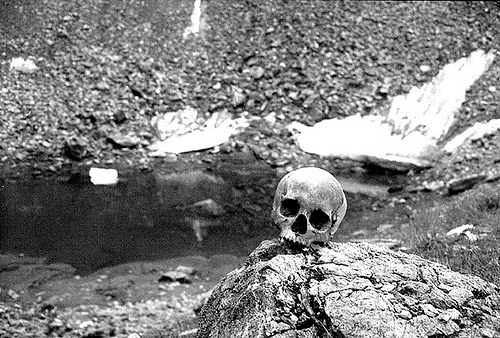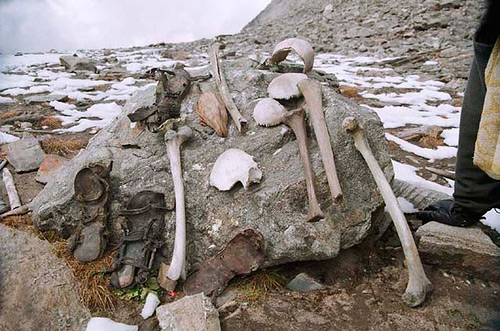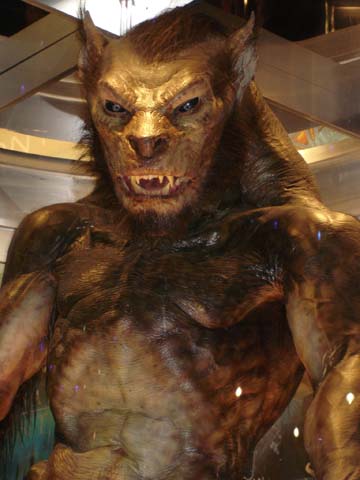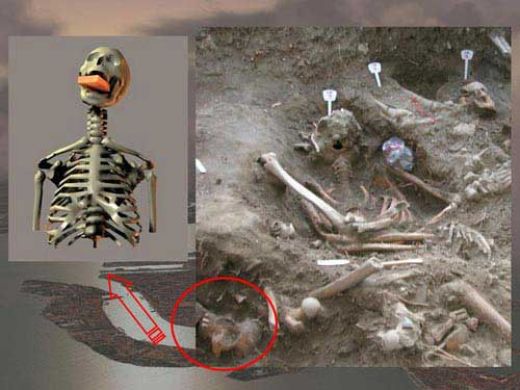Roopkund is one of the most enticing and fascinating places of the world. Situated in the isolated corners of the greatest mountains of Himalayas at a height of about 5029 meters equalizing at about 16500 feet, it is a creation that nature has brought about in quite an interesting manner. People tend to locate it in the Indian state of Uttarakhand. Roopkund has an inscrutability and vagueness that has decepted multiple generations of fortune tellers.
Roopkund is better off known as “The skeleton lake” due to the presence of an enormous grave that holds about 300 to 600 skeletons. This discovery has revolutionized the world of ancient history ever since 1942, when a park ranger came across this mass deposition of bones. It probably is an in-accessible frozen lake that requires about four day travel to reach from the nearest locality. Recently, it has become an important spot for the visitors as they learn and conjecture this advent of science.
Through carbon dating tests, it has been experimentally estimated that these skeletons belong to anytime between 12th and 15th century. It is primarily believed that the deaths were caused by some kind of natural disaster like a blizzard, landslide or any bacterial disease. However, this topic still remains controversial among the residents, anthropologists and paleontologists of modern times.
Some went ahead to mystify the deaths with fictional possibilities and creating folklores out of it. Others suggested multiple causalities of the skeletons being those of wandering Tibetan traders who had lost their way, royal pilgrims, people committing ritualistic suicides, vanquished army etc.
More recently in 2004, a team of European and Indian scientists sent by The National Geographic Channel visited Roopkund to carry on with the probe. Their research has unearthed interesting hints and information. Part of their findings includes anthropological treasures like well-preserved corpses, jewelry, bones and skulls belonging to the dead. Read complete story at http://theunexplainedmysteries.com/roopkund-skeleton-lake.html
Sunday, February 28, 2010
Tuesday, February 9, 2010
Unexplained Mysteries of Werewolves
The mythological belief in werewolves has been with us for centuries. Many historians and folklorists have pondered the origins of the belief in lycanthropy, which is really the human ability to change into not only wolves but bears, big cats and other dangerous creatures. Of all of these transformations though, that of man into wolf is the best known. This is largely due to the Old World traditions of wolves being feared as predators by the Europeans. There are many historical accounts of wolves preying on human beings during wars and hard winters, although not all of these accounts can be taken as fact. However, the true accounts were prevalent enough that the French had a word for the wolf that has acquired a taste for human flesh, the “werewolf” or the loup-garou.
As Christianity rose to power, the church condemned such beliefs and soon, the wolf was seen as a symbol of evil. Many debated over whether or not men really turned into wolves or if Satan merely caused witnesses to be deluded into thinking a man had changed into a wolf.
For those who claimed such powers, their delusions were frighteningly real. Many people who believed themselves to be werewolves testified, under torture and otherwise, of murdering both people and animals while in their transformed state. For this reason, many researcher today have associated being a “werewolf” with those we would deem to be murderously mentally ill. Among these were serial killers like Stubbe Peeter, who was tried in Germany in 1589 for a 25 year crime spree. During that time, he murdered adults and children (including his own son), committed cannibalism and incest and attacked animals. Peeter claimed to have made a pact with Satan, who had then given him an animal pelt that would change him into a wolf. In 1598, French authorities arrested Jacques Roulet after he was found hiding in some brush and covered with the blood of a mutilated teenaged boy. Roulet claimed that he had killed the boy while transformed into a werewolf. Was that wolfman ?
With tales such of this, lycanthropy has been deemed as a serious mental disorder. But can we really place all accounts of werewolves into a category of human dysfunction? There are sightings and accounts that do exist, although few of them, that lead researchers to ponder whether or not man-wolves can actually be real. In reality, these creatures should not exist, but so much of our understanding of these creatures comes from anthropologists and folklorists (not to mention the movies) and since these sensible people would never believe that a werewolf could possibly be seen - they natural dismiss any true accounts that might surface.
This is not to say that werewolves are real - I leave such decisions for the reader to judge - but there are some accounts out there that just might have you thinking twice. Remember that werewolves are only slightly less implausible than many other creatures that people claim to see (from Bigfoot to giant winged creatures) but most of us have a lot less trouble believing in the other assorted monsters said to wander the land. The stories that follow do not amount to trying to convince the reader that true werewolves are prowling America, but they are worthy of interest.
As you will soon see, the state of Wisconsin seems to have a number of werewolf sightings. Why this might be is anyone’s guess, but the stories that follow will certainly have you leaving the high beams of your car headlights on while traveling the back roads of the “cheese state” at night! One of the first Wisconsin werewolf sightings occurred in 1936. A man named Mark Schackelman reportedly encountering a talking wolfman just east of Jefferson, Wisconsin on Highway 18. As he was driving along the road one evening, he spotted a figure digging in an old Indian mound. He looked closer and saw that the figure was a strange, hair-covered creature that stood erect and stood more than six feet tall. The face of the creature boasted a muzzle and features of both an ape and a dog. Its hands were oddly formed with a twisted thumb and three fully formed fingers. The beast gave off a putrid smell that was like “decaying meat”.
Schackelman returned to the site the following evening, hoping for another look, and this time, he actually heard the creature speak in what he described as being “neo human”. The beats uttered a “three-syllable growling noise that sounded like gadara with the emphasis on the second syllable.” Schackelman was a religious man and after spotting this obviously “evil” creature, he began to back away from it and to pray. Eventually the creature was lost to sight.
Read more at http://theunexplainedmysteries.com/werewolves.html
Unexplained Mysteries - Arnold Paole - Real Vampire Story
Arnold Paole (Arnont Paule in the original documents; an early German rendition of a Serbian name or nickname, perhaps Arnaut Pavle; died c. 1726) was a Serbian hajduk who was believed to have become a vampire after his death, initiating an epidemic of supposed vampirism that killed at least 16 people in his native village of Meduegna (also rendered as Metwett; likely a German rendition of Serbian Medveda, not to be confused with the modern Southern Serbian town of Medveda), located at the Morava river near the town of Paracin. His case, like the similar case of Peter Plogojowitz, became famous because of the direct involvement of the Austrian authorities and the documentation by Austrian physicians and officers, who confirmed the reality of vampires. Their report of the case was distributed in Western Europe and contributed to the spread of vampire belief among educated Europeans. The report and its significance for the subsequent Eighteenth century vampire controversy are nowadays explained with the poor understanding of the process of corpse decomposition at the time.
Knowledge of the case is based mostly on the reports of two Austrian military doctors, Glaser and Flückinger, who were successively sent to investigate the case.
Background
With the Treaty of Passarowitz (Požarevac, 1718), the Habsburg Monarchy annexed most of Serbia and the northern part of Bosnia, territories which had been part of the Ottoman Empire. These remained in Austrian control until the Treaty of Belgrade (1739), when the Austrians were forced to cede them back to the Turks. During this 20-year period, these newly conquered boundary districts were subject to direct military rule from Vienna for strategical, as well as fiscal and other reasons. As a result of the devastation brought about by previous Austrian-Ottoman wars, these areas were in a poor condition, with scarce and partly nomadic population, little agriculture and an emphasis on cattle-breeding. The Austrian authorities sought to further economic development and attract German-speaking as well as Serbian and Bulgarian settlers to the new territories. Many of the Serbs, especially those who had immigrated from Ottoman-held areas, were recruited as militiamen (hajduks) for the protection of the boundaries in peace-time as well as regular military service at war in exchange for unalienable lots of land. It was in these communities that the earliest well-documented alleged vampire attacks were attested.
The first outbreak
This outbreak is only known from Flückinger's report about the second epidemic and its prehistory. According to the account of the Medveda locals as retold there, Arnold Paole was a hajduk who had moved to the village from the Turkish-controlled part of Serbia. He reportedly mentioned often that he had been plagued by a vampire at a location named Gossowa (perhaps Kosovo) but that he had cured himself by eating soil from the vampire's grave and smearing himself with his blood. About 1725, he broke his neck in a fall from a haywagon. Within 20 or 30 days after Paole's death, four persons complained that they had been plagued by him. These people died shortly after. Still ten days later villagers, advised by their hadnack (a military/administrative title) who had witnessed such events before, opened his grave.
They saw that the corpse was undecomposed "and that fresh blood had flowed from his eyes, nose, mouth, and ears; that the shirt, the covering, and the coffin were completely bloody; that the old nails on his hands and feet, along with the skin, had fallen off, and that new ones had grown". Concluding that Paole was indeed a vampire, they drove a stake through his heart, to which he reacted by groaning and bleeding, and burned the body. They then disinterred Paole's four supposed victims and performed the same procedure, to prevent them from becoming vampires.
The second outbreak
About 5 years later, in the winter of 1731, a new epidemic occurred, with more than ten people dying within several weeks, some of them in just two or three days without any previous illness. The numbers and the age of the deceased vary somewhat between the two main sources.
Glaser's report on the case states that by 12 December, 13 people had died in the course of 6 weeks. Glaser names the following victims (here rearranged chronologically): Miliza (Serbian Milica, a 50-year-old woman); Milloi (Serbian Miloje, a 14-year-old boy); Joachim (a 15-year-old boy); Petter (Serbian Petar, a 15-day-old boy); Stanno (Serbian Stana, a 20-year-old woman) as well as her newborn child, which Glaser notes was buried "behind a fence, where the mother had lived" due to not having lived long enough to be baptized; Wutschiza (Serbian Vucica, a 9-year-old boy), Milosova (Serbian Milošova, actually "Miloš's /wife/", a 30-year-old wife of a hajduk), Radi (Serbian Rade, a twenty-four-year-old man), and Ruschiza (Serbian Ružica, a forty-year-old woman). The sick had complained of stabs in the sides and pain in the chest, prolonged fever and jerks of the limbs. Glaser reports that the locals considered Milica and Stana to have started the vampirism epidemic.
Read more at http://theunexplainedmysteries.com/arnold-paole-real-vampire.html
Knowledge of the case is based mostly on the reports of two Austrian military doctors, Glaser and Flückinger, who were successively sent to investigate the case.
Background
With the Treaty of Passarowitz (Požarevac, 1718), the Habsburg Monarchy annexed most of Serbia and the northern part of Bosnia, territories which had been part of the Ottoman Empire. These remained in Austrian control until the Treaty of Belgrade (1739), when the Austrians were forced to cede them back to the Turks. During this 20-year period, these newly conquered boundary districts were subject to direct military rule from Vienna for strategical, as well as fiscal and other reasons. As a result of the devastation brought about by previous Austrian-Ottoman wars, these areas were in a poor condition, with scarce and partly nomadic population, little agriculture and an emphasis on cattle-breeding. The Austrian authorities sought to further economic development and attract German-speaking as well as Serbian and Bulgarian settlers to the new territories. Many of the Serbs, especially those who had immigrated from Ottoman-held areas, were recruited as militiamen (hajduks) for the protection of the boundaries in peace-time as well as regular military service at war in exchange for unalienable lots of land. It was in these communities that the earliest well-documented alleged vampire attacks were attested.
The first outbreak
This outbreak is only known from Flückinger's report about the second epidemic and its prehistory. According to the account of the Medveda locals as retold there, Arnold Paole was a hajduk who had moved to the village from the Turkish-controlled part of Serbia. He reportedly mentioned often that he had been plagued by a vampire at a location named Gossowa (perhaps Kosovo) but that he had cured himself by eating soil from the vampire's grave and smearing himself with his blood. About 1725, he broke his neck in a fall from a haywagon. Within 20 or 30 days after Paole's death, four persons complained that they had been plagued by him. These people died shortly after. Still ten days later villagers, advised by their hadnack (a military/administrative title) who had witnessed such events before, opened his grave.
They saw that the corpse was undecomposed "and that fresh blood had flowed from his eyes, nose, mouth, and ears; that the shirt, the covering, and the coffin were completely bloody; that the old nails on his hands and feet, along with the skin, had fallen off, and that new ones had grown". Concluding that Paole was indeed a vampire, they drove a stake through his heart, to which he reacted by groaning and bleeding, and burned the body. They then disinterred Paole's four supposed victims and performed the same procedure, to prevent them from becoming vampires.
The second outbreak
About 5 years later, in the winter of 1731, a new epidemic occurred, with more than ten people dying within several weeks, some of them in just two or three days without any previous illness. The numbers and the age of the deceased vary somewhat between the two main sources.
Glaser's report on the case states that by 12 December, 13 people had died in the course of 6 weeks. Glaser names the following victims (here rearranged chronologically): Miliza (Serbian Milica, a 50-year-old woman); Milloi (Serbian Miloje, a 14-year-old boy); Joachim (a 15-year-old boy); Petter (Serbian Petar, a 15-day-old boy); Stanno (Serbian Stana, a 20-year-old woman) as well as her newborn child, which Glaser notes was buried "behind a fence, where the mother had lived" due to not having lived long enough to be baptized; Wutschiza (Serbian Vucica, a 9-year-old boy), Milosova (Serbian Milošova, actually "Miloš's /wife/", a 30-year-old wife of a hajduk), Radi (Serbian Rade, a twenty-four-year-old man), and Ruschiza (Serbian Ružica, a forty-year-old woman). The sick had complained of stabs in the sides and pain in the chest, prolonged fever and jerks of the limbs. Glaser reports that the locals considered Milica and Stana to have started the vampirism epidemic.
Read more at http://theunexplainedmysteries.com/arnold-paole-real-vampire.html
Subscribe to:
Comments (Atom)




